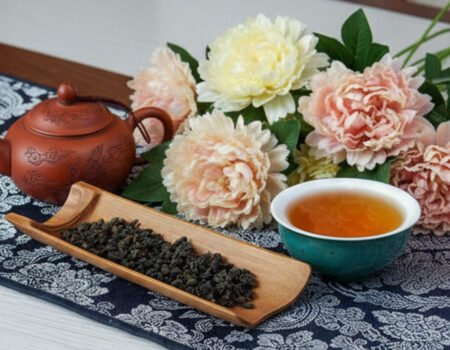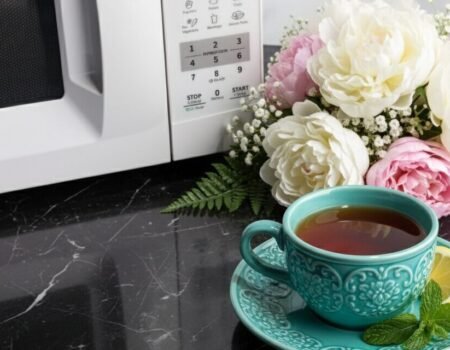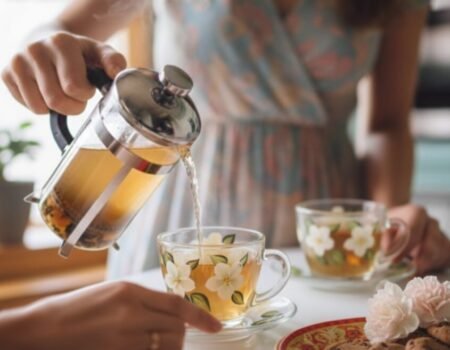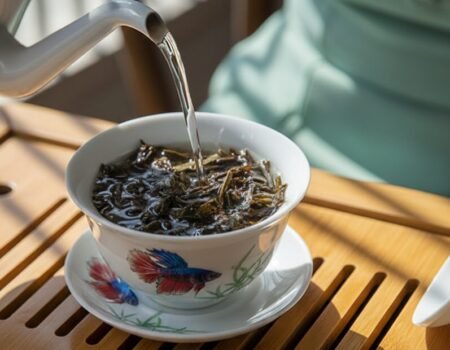
Master the Art of Tea Flavor Adjustment with Expert Brewing Techniques
Index
Many tea lovers struggle to get the perfect taste from their brews, often ending up with bitter or weak cups. Tea flavor adjustment isn’t just about steeping time – it involves several factors including water temperature, leaf quantity, and brewing methods.
This guide will show you how to control these elements to create your ideal cup of tea every time. Get ready to transform your daily tea ritual.
Key Takeaways
- Water temperature directly affects tea flavor—use 160-185°F (71-85°C) for green teas and near-boiling for black teas to avoid bitterness.
- The standard ratio of 2-3 grams of tea per 150-200 ml of water creates balanced flavor, but you can adjust based on taste preference.
- Brewing time varies by tea type—black teas need 3-5 minutes while green teas require only 1-3 minutes for optimal flavor.
- Quality loose leaf teas can be steeped multiple times (5-10 infusions), with each brew revealing different flavor notes.
- Tea storage requires protection from light, air, moisture, and odors to maintain freshness and flavor quality.
Understanding Tea Flavor Profiles

Tea flavors exist on a complex spectrum influenced by several factors. Each type of tea—black, green, oolong, white, or pu-erh—brings its own distinct taste profile to your cup.
Black teas often deliver bold, malty notes, while green teas present vegetal, grassy characteristics. White teas offer subtle, delicate sweetness, and oolongs range from floral to toasty depending on oxidation levels.
The flavor you experience comes from two main components: taste (what your tongue detects) and strength (how intense those flavors appear).
Tea flavor varies naturally from year to year based on growing conditions, much like wine vintages. Your personal palate also plays a crucial role in how you perceive these flavors.
What you ate earlier, your health status, and even the water you use can change how tea tastes to you. Building a refined tea palate takes practice and attention to detail. Try tasting different teas side by side to spot unique characteristics.
Focus on identifying specific flavor notes rather than simply deciding if you like it or not. This approach helps develop your ability to detect subtle differences between quality teas.
Techniques to Adjust Tea Flavor
Tweaking your tea’s flavor involves several key methods that can transform an ordinary cup into something special. You can change brewing times, water temperatures, and leaf amounts to create your perfect cup of tea.
Altering brew strength
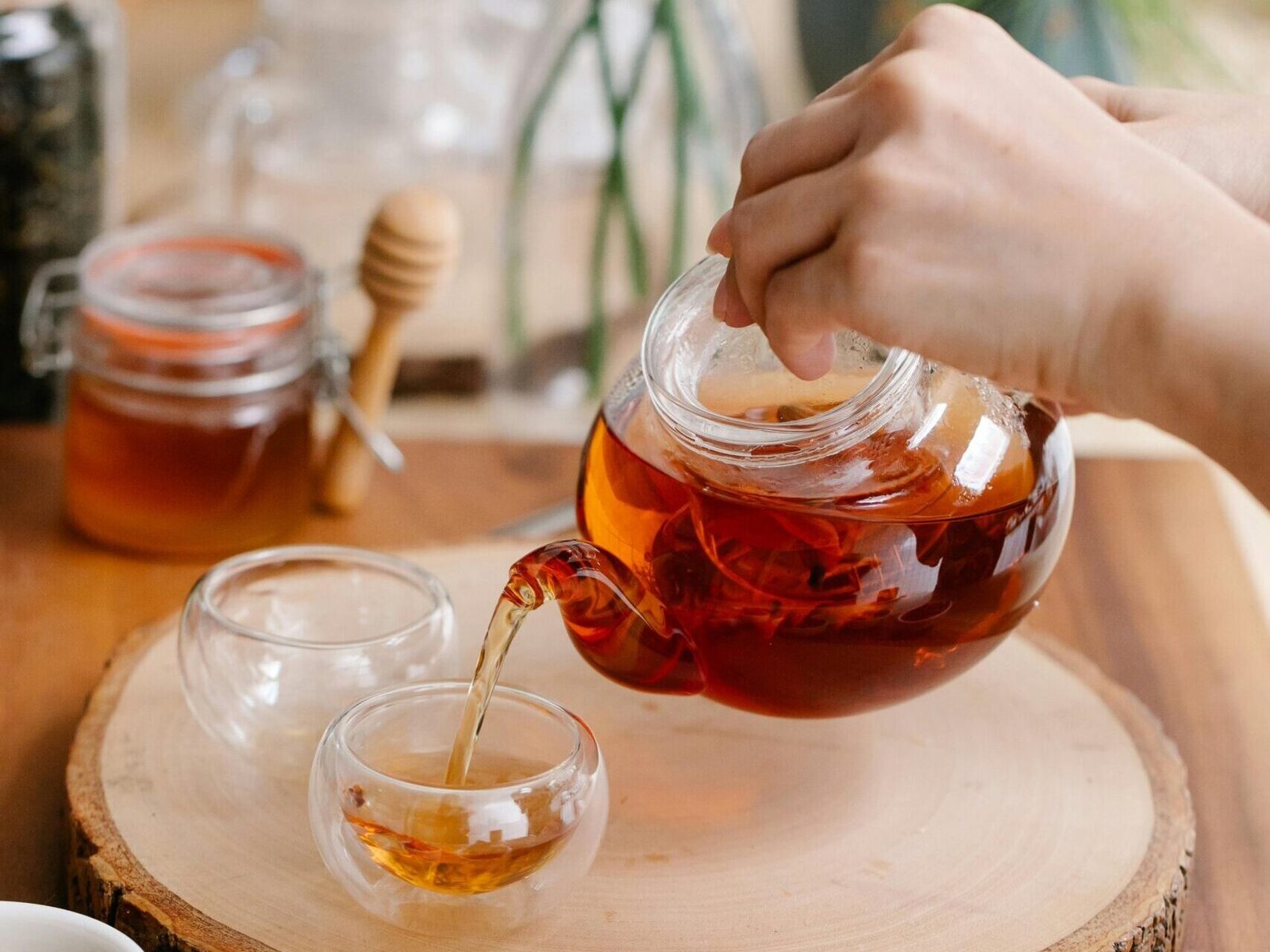
Controlling your tea’s strength starts with simple adjustments to brewing time. For a weaker cup, cut back on steeping time. If you prefer a bolder flavor, let those leaves soak longer in hot water.
The basic rule works across all tea types: 3-5 minutes creates standard strength for black tea at 200-212°F / 93°C-100°C. Tea leaf quantity also plays a crucial role in flavor extraction. More leaves produce a stronger brew, while fewer leaves make a lighter cup.
Tea experts suggest using 2-3 grams per 150-200 ml of water as a starting point. This ratio helps balance flavor intensity without creating bitter or weak results.
You can fine-tune your brew strength through careful measurement rather than guesswork. Many tea drinkers follow the guideline of 1-2 grams per ounce of water for consistent results.
This approach works especially well with loose leaf tea where you control exactly how much goes into your pot or cup. The tea’s full flavor develops differently based on these measurements, creating either robust or delicate taste profiles.
Adjusting water temperature offers another way to change how your tea tastes, affecting which flavor compounds get released during brewing.
Adjusting water temperature

Water temperature plays a crucial role in tea flavor development. Each tea type needs specific heat levels to release its best taste. Green and white teas require cooler water between 160-185°F (71-85°C) to avoid bitter or grassy notes.
The gentle heat preserves delicate flavors and prevents over-extraction. Black and dark teas like pu-erh need hotter water, close to boiling, to unlock their full flavor profile.
You can fine-tune your brew by adjusting temperature based on your taste preferences. Too hot water extracts flavor faster but risks making tea harsh or astringent. Cooler water slows this process, creating a milder cup but might leave flavors trapped in the leaves.
A simple kitchen thermometer helps achieve the perfect temperature for your specific tea type, bringing out sweet and umami flavors while avoiding unpleasant bitterness.
Experimenting with brew times
Brew time makes a huge difference in your tea’s flavor profile. Black teas reach their best flavor between 3-5 minutes of steeping, while green teas need only 1-3 minutes to shine.
We’ve found that most quality teas develop optimal taste within 2-5 minutes, after which the flavor starts to decline. For less bitterness, try steeping your leaves for just 1-2 minutes and quickly removing them from water once your desired strength is reached.
This simple timing adjustment can transform a harsh cup into a smooth, balanced experience.
Your tea leaf type dictates the perfect brew time for maximum flavor extraction. Japanese green teas often need shorter steeps than robust black teas to prevent that unpleasant bitter taste.
Many tea lovers keep a timer handy to track their perfect steep time for each variety. Testing different durations helps you discover how time affects body, aroma, and intensity in your cup.
Next, let’s explore how adjusting tea leaf ratios can further perfect your brewing technique.
Using Tea Leaf Ratios to Perfect Flavor
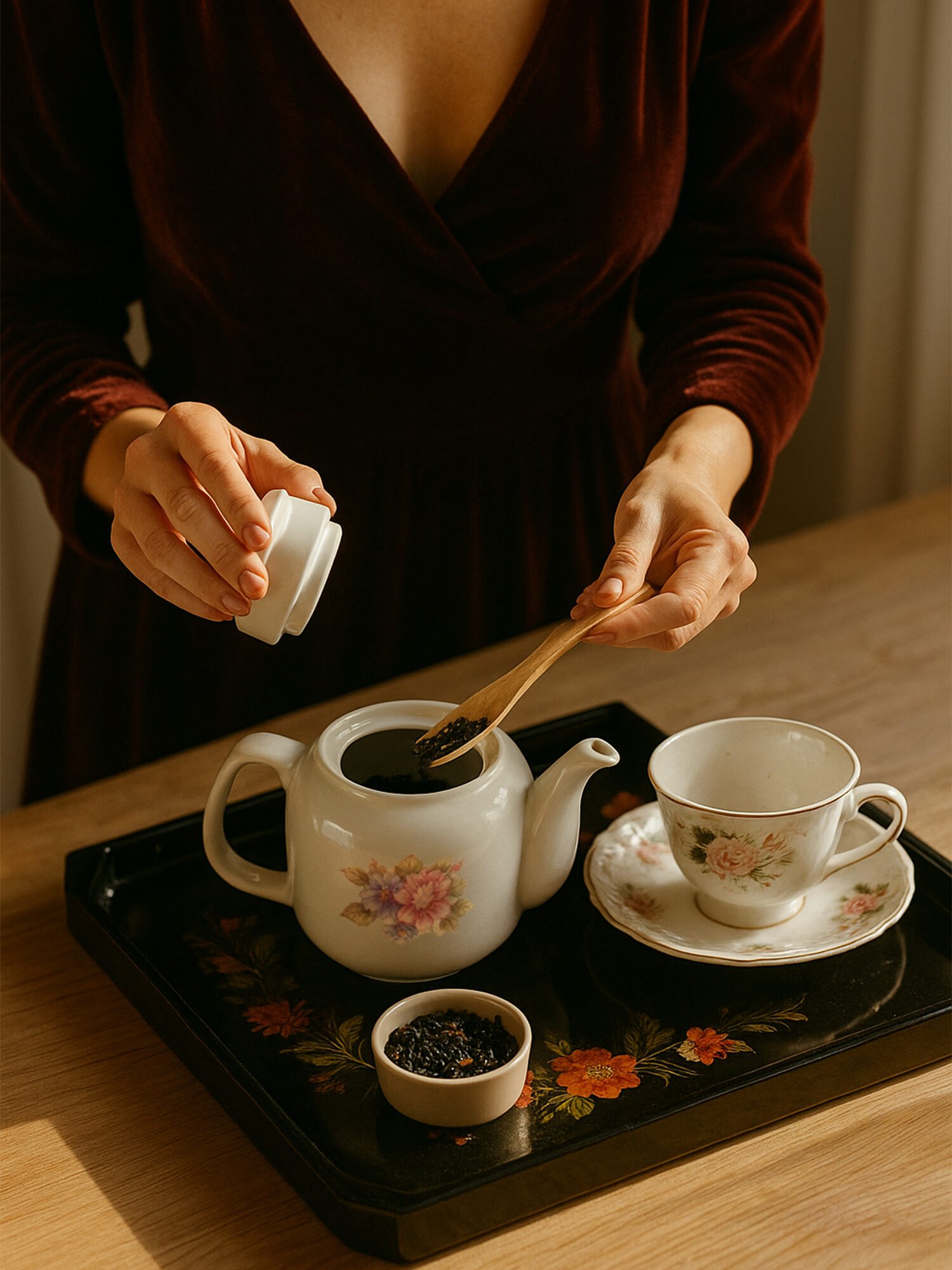
The amount of tea leaves you use directly impacts your brew’s strength and character. For a balanced cup, start with 2-3 grams of tea per 150-200 ml of water. This ratio creates a standard flavor profile that most tea drinkers enjoy.
Tea enthusiasts who prefer stronger flavors might increase to 1-2 grams per 30 ml of water, while those wanting a lighter taste can reduce the leaf amount. Many tea lovers find that measuring leaves with a small scale improves consistency across different brewing sessions.
Gongfu brewing takes a different approach to leaf ratios. This traditional Chinese method uses more tea leaves with shorter steep times, creating intense flavor layers that change with each infusion.
The high leaf-to-water proportion brings out subtle notes that might get lost in standard brewing. You might discover new depth in your favorite tea by adjusting these ratios. Green teas often taste best with fewer leaves, while robust black teas and pu-erh can handle more leaves without becoming bitter.
Your personal taste should guide these adjustments as you develop your unique tea ritual.
Adding Enhancements to Tea
Tea can transform from simple to spectacular with the right additions. Milk, honey, and other flavor boosters open up new worlds of taste for your daily cup.
Incorporating milk or cream
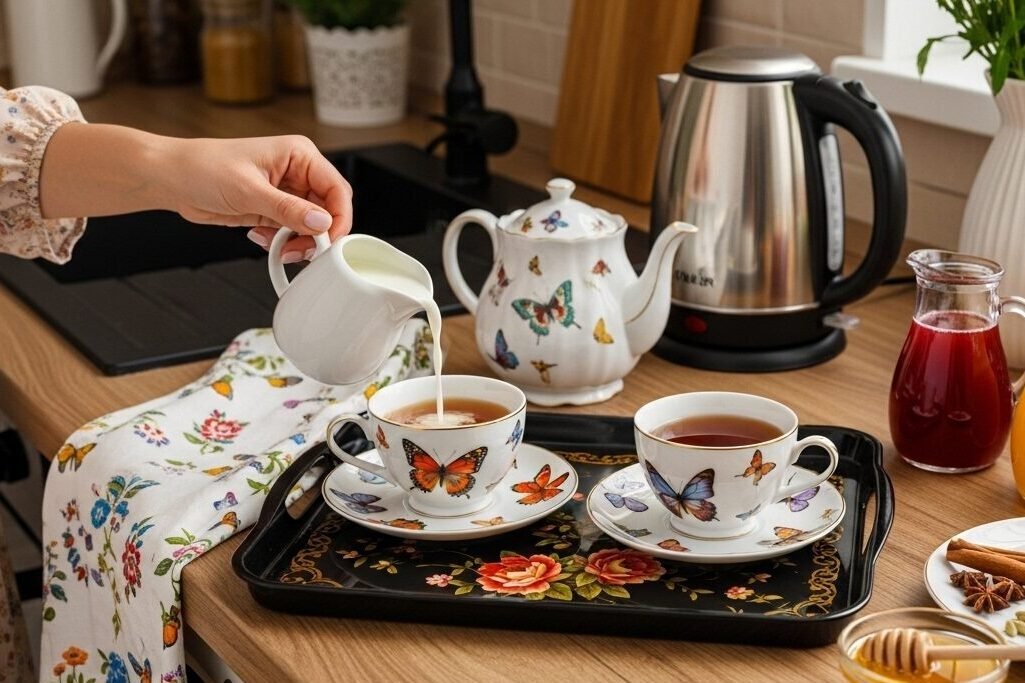
Milk in tea creates both flavor changes and chemical reactions worth noting. Research shows milk proteins interact with tea polyphenols, which may reduce some antioxidant benefits in your cup.
The fat globules in cream or whole milk blend with tea compounds differently than skim milk does. You’ll taste this difference most clearly in robust black teas like English Breakfast, where milk softens astringency and adds richness.
Different teas respond uniquely to dairy additions. Black teas generally pair well with milk, while delicate green or white teas often lose their subtle notes when dairy is added. The amount matters too – just a splash preserves more tea flavor than a heavy pour.
For the best balanced flavor, try adding milk after brewing rather than before, as this helps maintain proper brewing temperature and extraction of tea compounds.
Adding sweeteners like honey or sugar
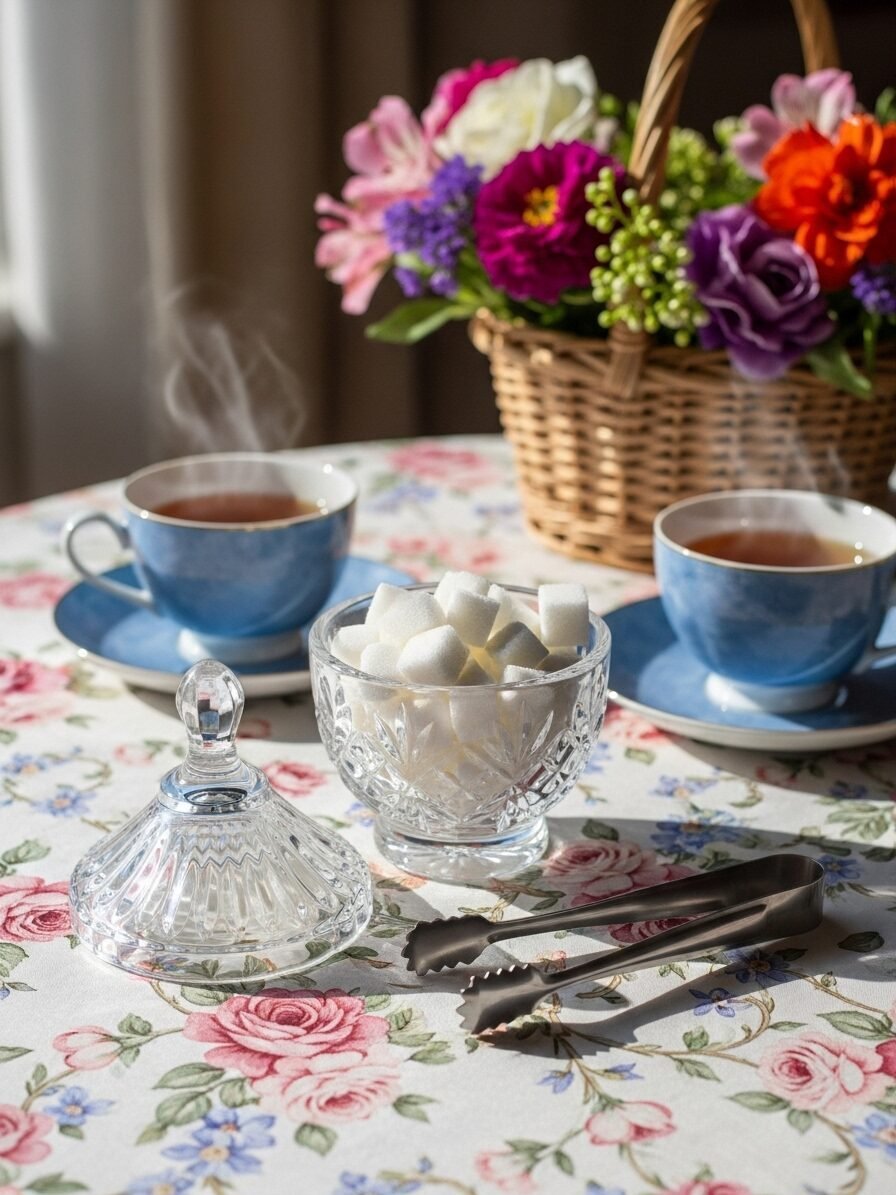
While milk adds creaminess to your tea, sweeteners bring a whole new dimension to your brew. Many tea lovers enjoy adding a touch of sweetness to balance the natural flavors in their cup.
Studies show that honey, sugar, and other sweeteners decrease tea’s antioxidant activity based on how much you add. This matters if you drink tea partly for its health benefits.
For a healthier option, try replacing regular cane sugar with raw honey or agave. Each sweetener creates a unique flavor profile that pairs differently with various teas. Honey adds complexity to black teas, while a small amount of sugar can soften the astringency in green tea without masking its subtle notes.
The key is to start with less sweetener than you think you need – you can always add more, but you can’t take it away once it’s mixed in.
Exploring Different Brewing Tools and Methods
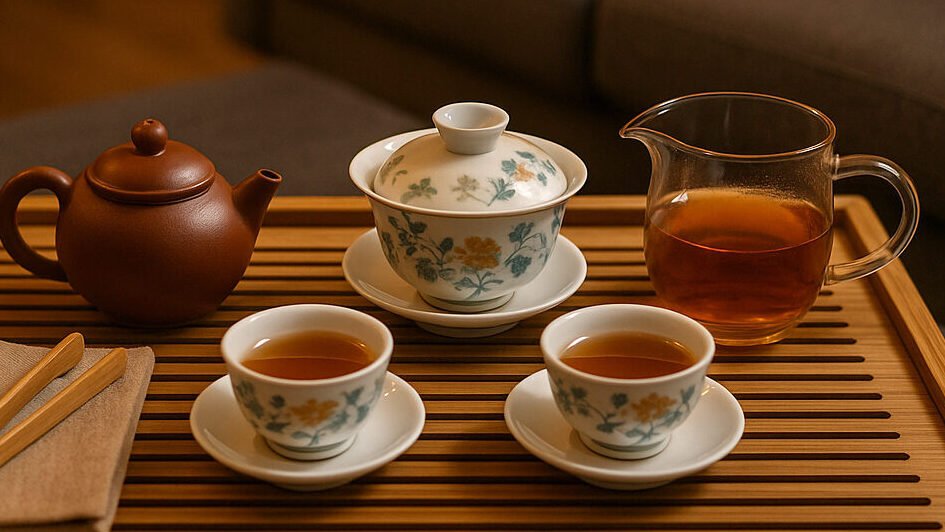
Your brewing tools can transform a basic cup into a tea masterpiece. Different teaware like Yixing clay teapots and gaiwans bring out unique flavors in each type of tea.
Using specialized teaware
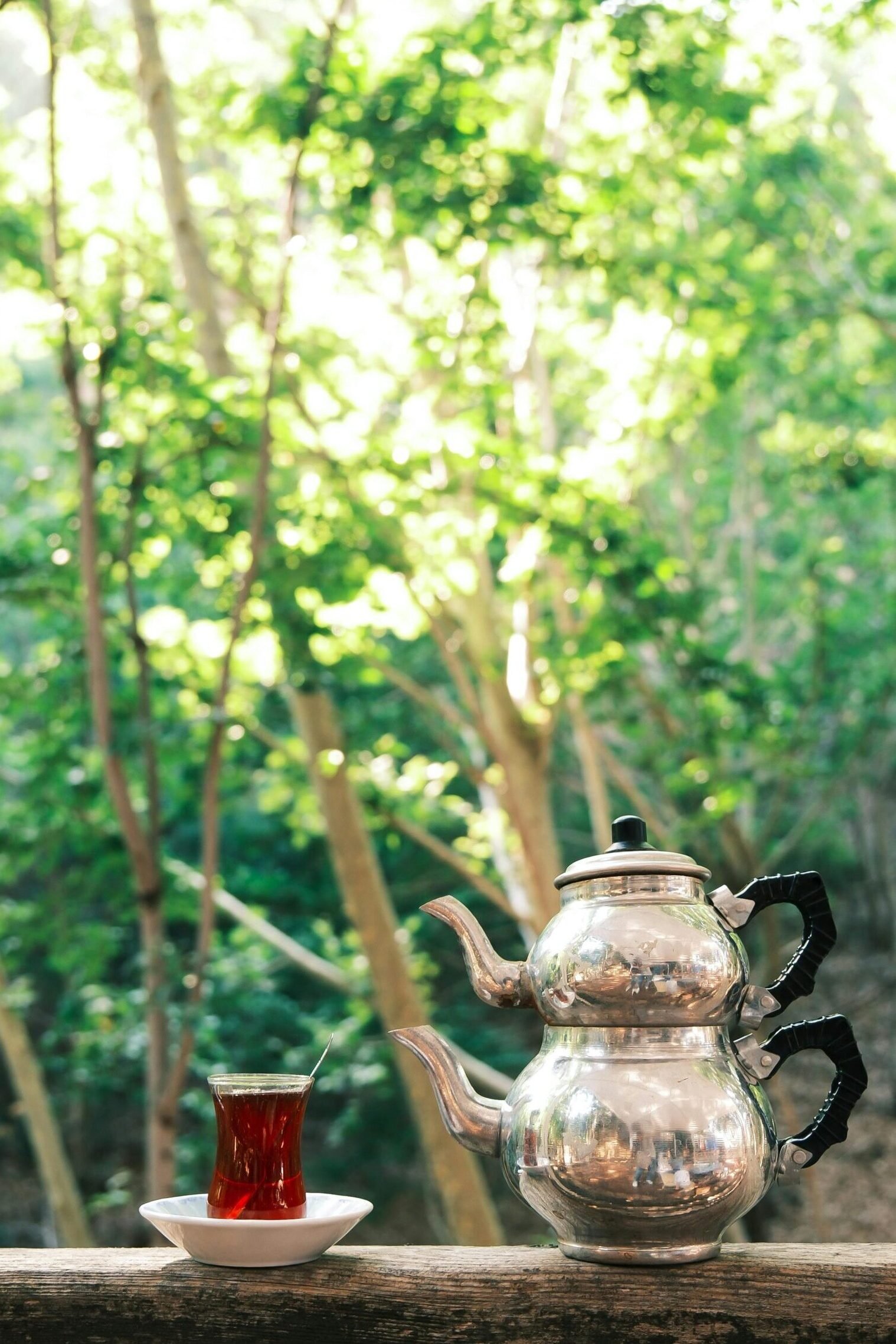
Specialized teaware transforms your tea experience by bringing out hidden flavors in each leaf. Yixing clay teapots, made from porous purple clay, absorb tea oils over time and enhance the depth of flavor with each brewing session.
Many tea experts prefer gaiwans—simple lidded bowls—for their versatility in brewing multiple tea types and controlling steep times precisely. The Japanese kyusu, designed specifically for green teas, features a side handle and fine mesh strainer that prevents leaf particles from entering your cup.
Turkish tea enthusiasts rely on the double-pot çaydanlık system to create the perfect strength through simultaneous brewing.
Different teas need specific vessels to shine at their brightest. Pu-erh tea develops rich, earthy notes when brewed in seasoned Yixing clay, while delicate white teas benefit from glass teaware that showcases their subtle color changes.
Oolong teas open fully in a gaiwan, releasing complex aromas impossible to achieve in standard mugs. The material matters too—ceramic retains heat longer than glass, while unglazed clay interacts with tea compounds to create unique taste profiles.
Beyond the vessel itself, water source quality plays a crucial role in bringing out the best flavors from your specialized teaware.
Trying alternative water sources
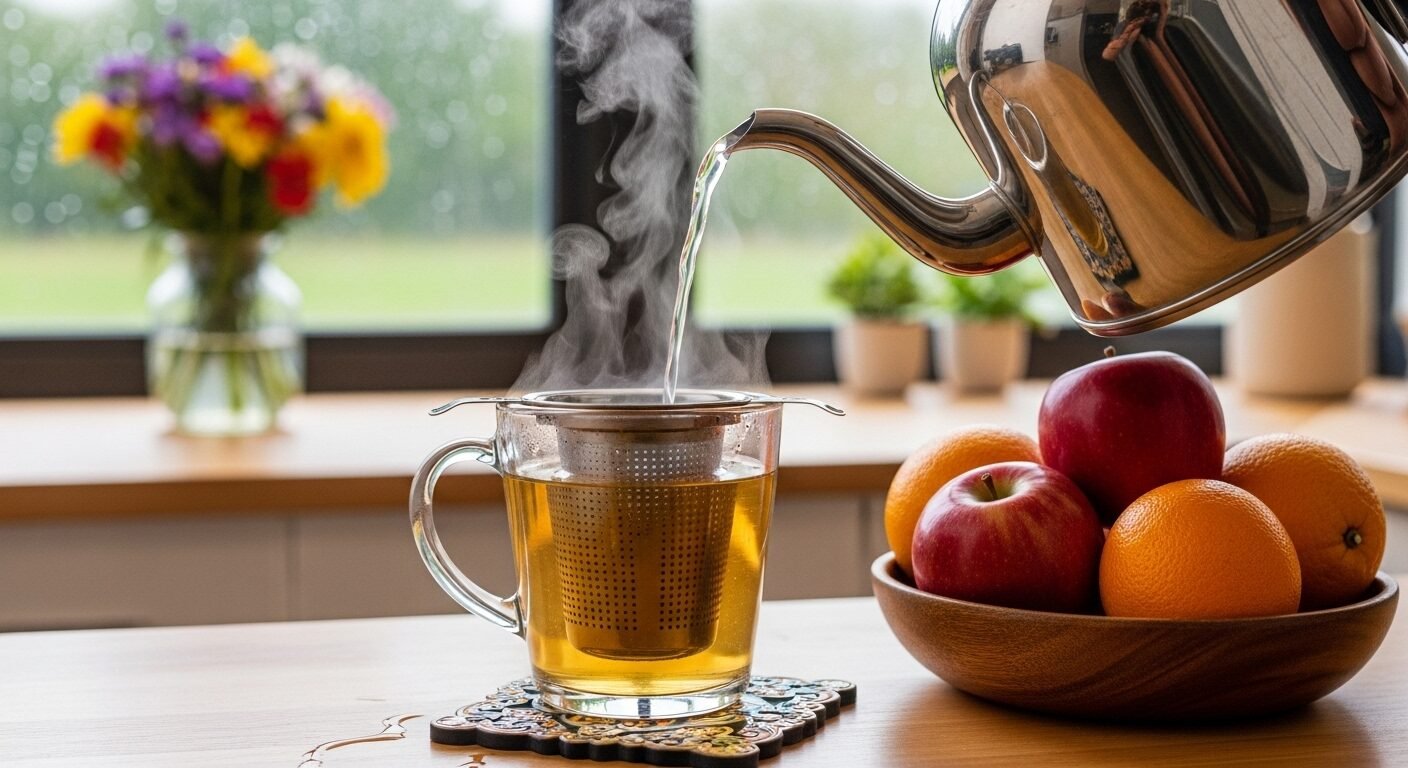
Beyond your teapot and cups, water quality plays a crucial role in tea flavor. Different water sources create distinct taste profiles in your brew. Mineral water produces darker tea with stronger flavors, as shown in scientific studies.
The mineral content directly impacts how your tea tastes and looks in the cup.
Try comparing tap water, filtered water, and bottled spring water with the same tea leaves. You’ll notice clear differences in taste, color, and aroma. For high-quality green teas, use water with neutral pH (around 7) and low mineral content.
Low‑mineral spring water (neutral pH, low alkalinity) enhances the volatile compounds that give tea its complex flavor profile. This simple change can transform an ordinary cup into something special without changing your tea leaves.
Tasting and Refining Your Tea
Tasting tea helps you build skills to notice subtle flavors that make each cup special. Your palate will grow sharper with practice, allowing you to adjust brewing methods for the perfect taste.

Developing your tea-tasting palate
Building a refined tea palate takes practice and patience. Start with basic tools: good tea leaves, a kettle, and your favorite cup. Pay attention to both dry and wet leaves by noting their color, shape, and smell.
This simple habit trains your taste buds to detect subtle flavor notes that make each tea unique. Many tea lovers find their skills improve faster by sharing tea with friends and discussing what they taste.
Your senses will sharpen over time as you try different types of tea. Take small sips and let the liquid coat your entire mouth to catch all flavor elements. Notice how green teas might taste grassy while black teas offer robust flavor with malty notes.
The temperature affects taste too—brewing at the right heat brings out a tea’s best qualities without creating an unpleasant taste or weak brew.
Reusing tea leaves for multiple brews
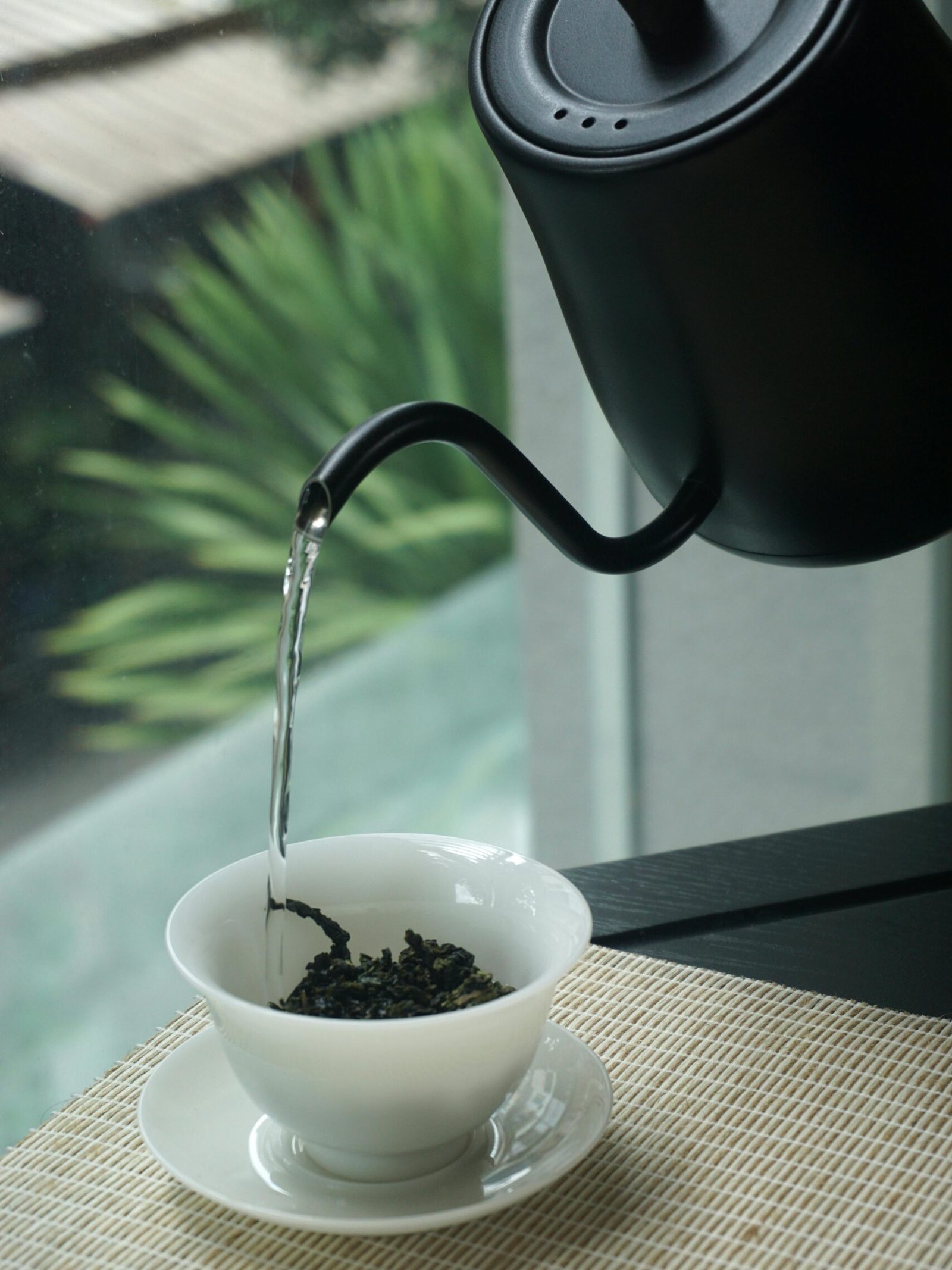
As your tea-tasting skills grow, you’ll discover the value in reusing your tea leaves. Quality loose leaf teas provide more than one good cup. Most loose leaf varieties can be steeped 5-10 times, giving you different flavor notes with each brew.
Oolong, green, pu-erh, and black teas work best for this practice.
Your brewing method matters for multiple steeps. Western brewing typically yields 2-3 good infusions, while the Gongfucha method allows 4-5 or more steeps through shorter brewing times.
Each new steep brings out different flavors from the leaves. Try adding 30 seconds to each steep time to maintain good flavor as the leaves gradually release their taste. This approach not only saves money but lets you explore how tea flavors change and develop across several cups.
Proper Tea Storage Techniques
Storing tea properly protects its flavor, freshness, and health benefits. Tea needs protection from its four main enemies: light, air, moisture, and strong odors. Keep your tea in opaque, airtight containers to block these harmful elements.

Different tea types should have separate storage spaces to prevent flavor mixing. The ideal storage temperature ranges from 50°F to 70°F (10°C to 21°C) in a dry spot away from your stove or dishwasher.
For serious tea lovers, vacuum sealing or Mylar bags offer excellent long-term storage options. Label each container with the tea type, origin, and purchase date to track freshness.
High quality tea deserves proper storage to bring out its best flavors during brewing. Green and black teas respond differently to storage conditions, so adjust your method based on the specific type of tea you’re storing.
This attention to storage will elevate your tea experience with every cup you brew.
Conclusion

Your tea journey becomes more rewarding as you master flavor adjustments. Small changes in water temperature, leaf quantity, and steep time create dramatic taste differences. You’ll discover personal preferences through practice and patience.
Tea brewing transforms from simple habit to mindful art when you apply these techniques daily. The perfect cup awaits you—crafted by your hands, suited to your unique taste, and bringing joy with each sip.
To ensure your tea remains fresh and flavorful, learn more about proper tea storage techniques.
FAQs
1. How can I make my tea taste better?
The art of tea brewing starts with using the right amount of tea leaves. For a stronger flavor, try using more tea or steep your tea leaves longer. Water temperature matters too—most teas taste best when brewed with water below boiling point.
2. Does water temperature affect the taste of tea?
Yes! Tea is a delicate drink that changes with heat. Green and yellow teas need lower temperatures around 170°F (~80°C), while black teas can handle boiling water. The wrong temperature can make your tea taste weak or bitter.
3. Should I put sugar in my tea?
While many people enjoy sweetened tea, you might want to try using less sugar to experience the natural flavors of the tea. Different types like Pu’er tea or Wuyi tea have complex tastes and aromas that sugar can hide.
4. What brewing techniques work best for herbal tea?
Herbal teas often need longer steeping times than regular teas. Use freshly boiled water and let them steep for 5-7 minutes. This method of brewing pulls out the full taste and health benefits.
5. Why does my tea taste weak?
Your tea may taste weak if you’re not using enough leaves or if your steeping time is too short. Water quality has a big impact on the taste too. Try filtered water for better results.
6. How do different brewing methods compare to coffee preparation?
Tea brewing focuses on gentle extraction while coffee preparation often uses pressure or longer heat exposure. Unlike coffee with its high caffeine content, tea offers varied caffeine levels and can be brewed multiple times, especially in traditional methods like Gongfu tea rituals from China.
References
- https://www.artoftea.com/blogs/tea-profiles
- https://jyyna.co.uk/how-to-make-tea-stronger/
- https://fastercapital.com/content/The-Art-of-Tea-Brewing–Madhatter-s-Techniques-Revealed.html
- https://rishi-tea.com/blogs/journal/why-water-temperature-is-important-when-brewing-tea?srsltid=AfmBOooi1vC79GiZb-mzVxXUxfodOqkKJ4hv3yF_dqprnwmclWAEdZOv
- https://www.firebellytea.com/blogs/all/tea-brewing?srsltid=AfmBOoqBLnEHYQyhxOt-WOpRxhpCis13ZCQ0JmD0WcQcwoJYOlN5EGOy
- https://www.lifeisbetterwithtea.com/brewing-tea/
- https://pubmed.ncbi.nlm.nih.gov/26517348/
- https://pubmed.ncbi.nlm.nih.gov/24128460/
- https://www.wanderlustea.com/post/a-guide-to-brewing-techniques-and-tea-ware
- https://pmc.ncbi.nlm.nih.gov/articles/PMC10192933/
- https://www.mccormick.northwestern.edu/news/articles/2025/02/brewing-tea-removes-lead-from-water/
- https://www.seriouseats.com/how-to-taste-tea
- https://artfultea.com/blogs/tea-wisdom/how-many-times-can-you-steep-loose-leaf-tea?srsltid=AfmBOoro1k8CAkH0HGCz3kBnMLA_q7NjwpI-OEft0_wrYx2HpoRglDaA
- https://artfultea.com/blogs/tea-wisdom/how-many-times-can-you-steep-loose-leaf-tea?srsltid=AfmBOor9rYKcrndLJshDFAoqo7VedP84ESHozYOf6aWfP2p3iQWSar2F
- https://www.teasetbox.com/mastering-tea-storage-expert-techniques-for-freshness-flavor/?srsltid=AfmBOoopj-UK0YTunr01QedLUvyKI3Y3C3RO6hZMN3P5UMbbJII_dZ_o (2023-06-27)
- https://www.thespruceeats.com/how-to-store-tea-properly-766319 (2022-04-18)




